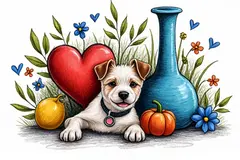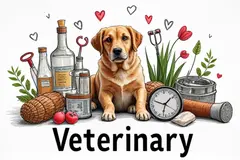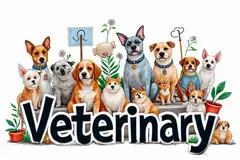 Medicated hemp used for packing.... ↪ Read more
Medicated hemp used for packing.... ↪ Read more Veterinary Drug Handbook (VDH) is the reference veterinarians turn to when they want an independent source of information on the drugs that are used in veterinary medicine today.
-
 Is veterinary Liniment Gel safe for humans?
Is veterinary Liniment Gel safe for humans? -
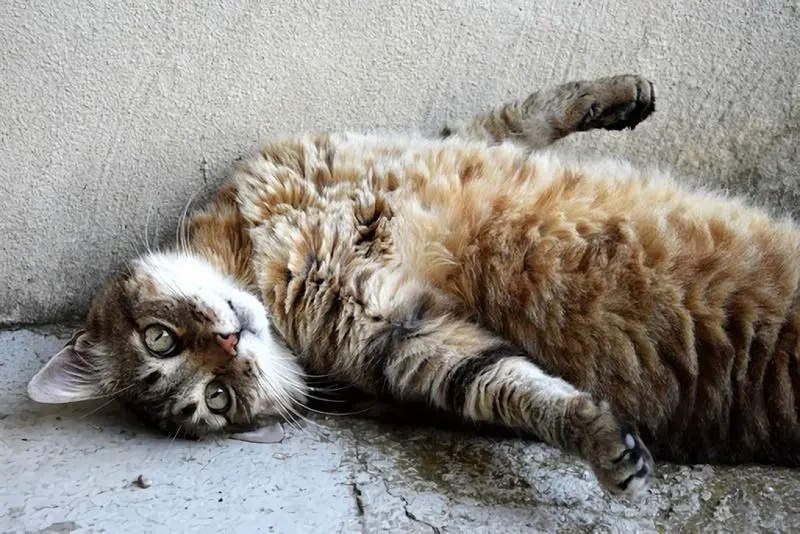 Giving Your Cat A Pill
Giving Your Cat A Pill -
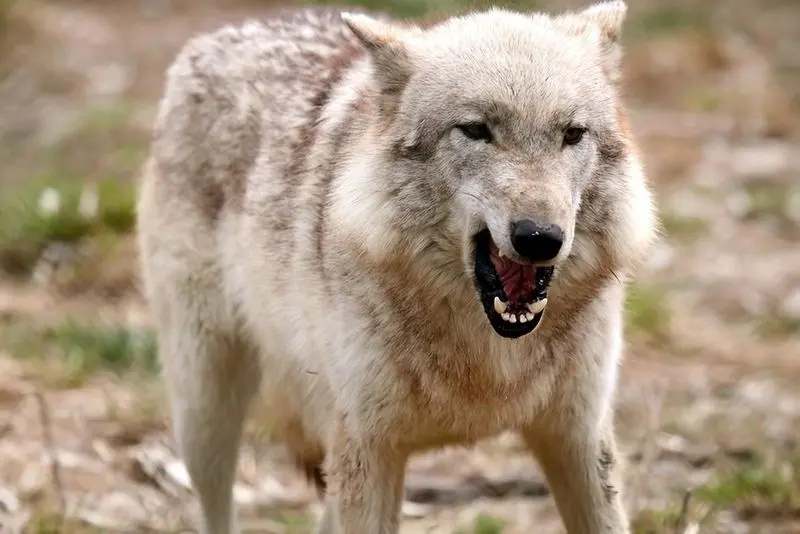 Dog Aggression
Dog Aggression -
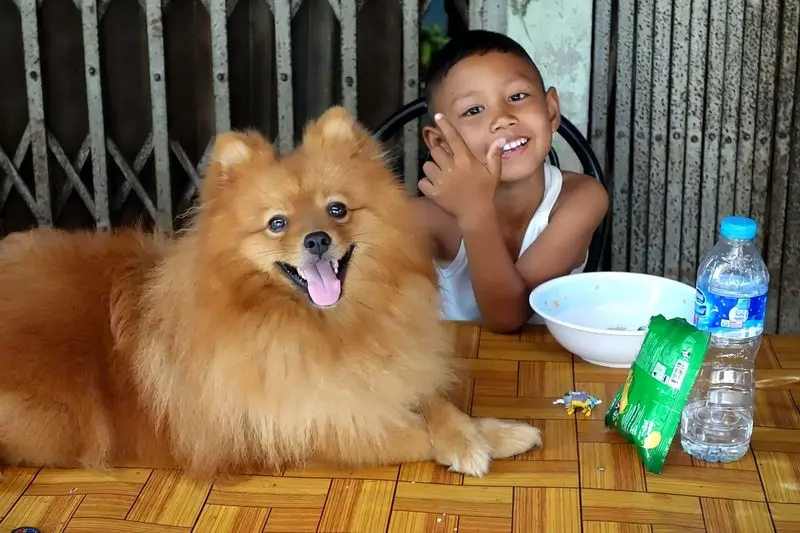 Dogs May Help Boost Infant Health
Dogs May Help Boost Infant Health -
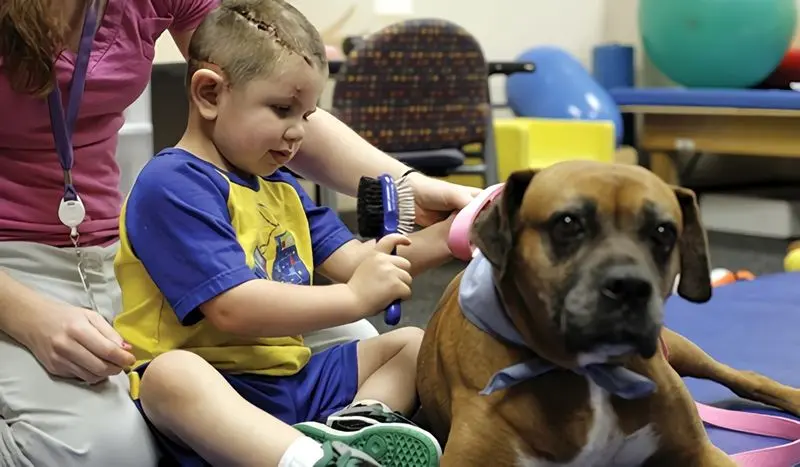 Animal-Assisted Therapy, Veterinary Social Work, & Social Work With People & Pets in Crisis
Animal-Assisted Therapy, Veterinary Social Work, & Social Work With People & Pets in Crisis -
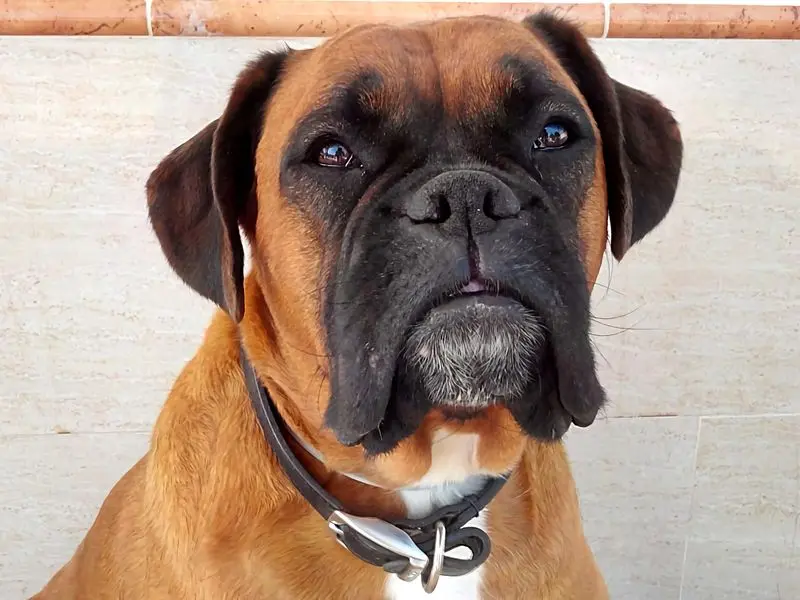 On-demand veterinary service gives advice on poorly pets
On-demand veterinary service gives advice on poorly pets -
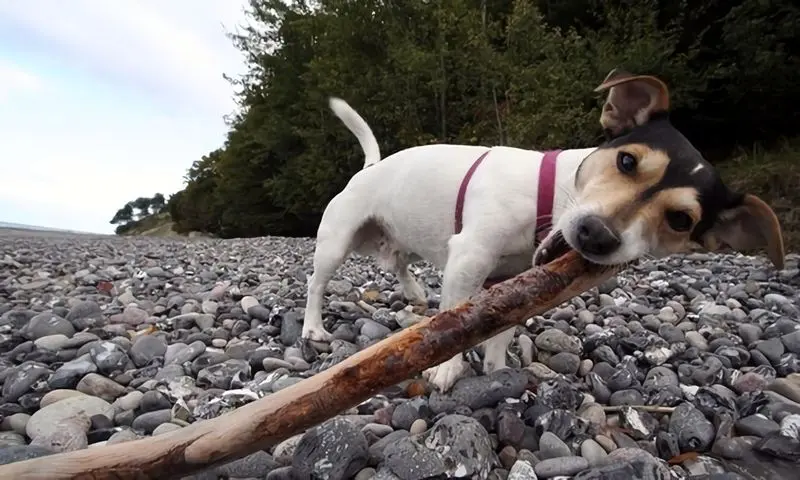 Should we stop throwing sticks for dogs?
Should we stop throwing sticks for dogs? -
 What does PU/PD mean in veterinary medicine?
What does PU/PD mean in veterinary medicine? -
 Can breathing in cat hair be harmful?
Can breathing in cat hair be harmful? -
 Bill calls for ban on sales of dogs, cats in Maine pet stores
Bill calls for ban on sales of dogs, cats in Maine pet stores -
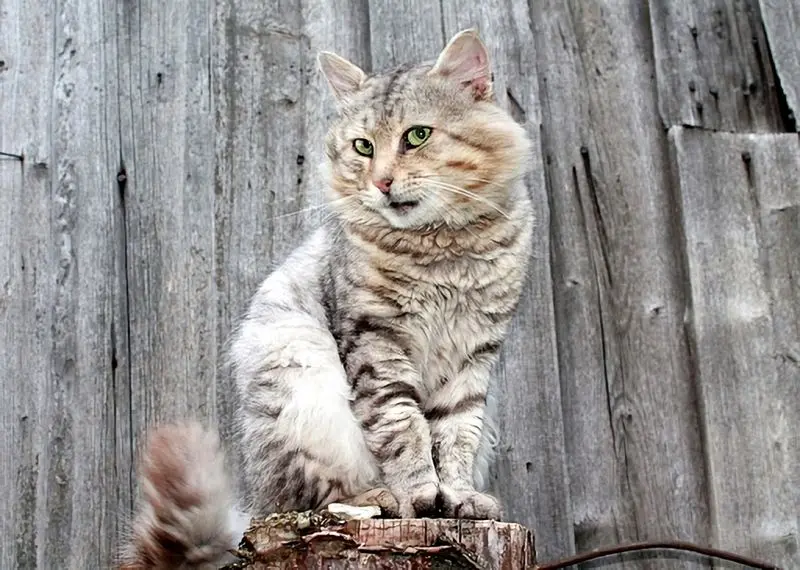 Common Meanings Of Cat Behavior
Common Meanings Of Cat Behavior -
 What does DVM stand for in veterinary?
What does DVM stand for in veterinary? -
 Curing Bad Cat Breath
Curing Bad Cat Breath -
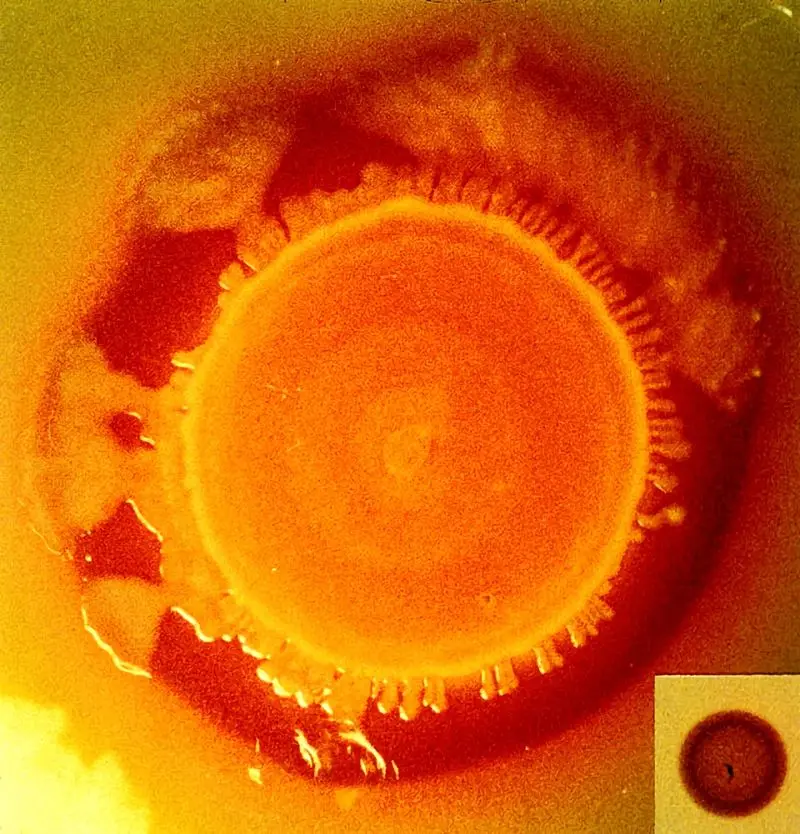 New Tracking Tool for Pathogen Investigators
New Tracking Tool for Pathogen Investigators -
Can binturongs be kept as pets?
-
 How long do instruments stay sterile after autoclaving veterinary?
How long do instruments stay sterile after autoclaving veterinary?
OAKUM
NORMAN
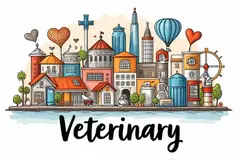 One of the five basic hoof shapes listed in the eagle eye approach suggested by Scott Simpson, CJF. The Norman pattern is considered the most normal fore hoof shape, and is generally round with the widest part of the foot located midway between the toe and heels.... ↪ Read more
One of the five basic hoof shapes listed in the eagle eye approach suggested by Scott Simpson, CJF. The Norman pattern is considered the most normal fore hoof shape, and is generally round with the widest part of the foot located midway between the toe and heels.... ↪ Read more NORMAL OR PHYSIOLOGICAL SHOEING
 Shoeing of a normal foot taking into account the physiological movements of the foot so as to interfere in a minimal way with them. Balancing of the foot is considered of primary importance.... ↪ Read more
Shoeing of a normal foot taking into account the physiological movements of the foot so as to interfere in a minimal way with them. Balancing of the foot is considered of primary importance.... ↪ Read more NON-WEIGHT BEARING
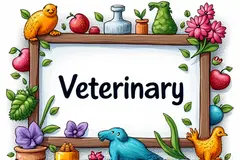 A non-weight bearing leg is one that is so sore that the horse will carry it without letting it touch the ground while moving.... ↪ Read more
A non-weight bearing leg is one that is so sore that the horse will carry it without letting it touch the ground while moving.... ↪ Read more NODDING
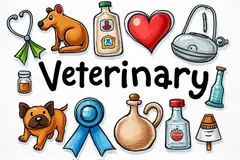 Nodding or bobbing the head is often an indication of lameness. The horse will use his head to help unweight a lame leg.... ↪ Read more
Nodding or bobbing the head is often an indication of lameness. The horse will use his head to help unweight a lame leg.... ↪ Read more NICHOLSON
NEURECTOMY
 Removal of a section of nerve to eliminate or reduce sensation in part of an animal's body. This procedure is often performed to alleviate pain within the horse's hoof. After such a neurectomy, the horse may not be considered entirely sound because the mechanical cause of the problem still exists.... ↪ Read more
Removal of a section of nerve to eliminate or reduce sensation in part of an animal's body. This procedure is often performed to alleviate pain within the horse's hoof. After such a neurectomy, the horse may not be considered entirely sound because the mechanical cause of the problem still exists.... ↪ Read more NERVING
NECROSIS
NECROPSY
NEAR
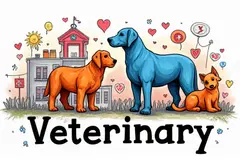 The side of the horse that faces west when the animal is walking north. The horse's left side. Horses are most often led, saddled, and mounted from the near side. Opposite of off.... ↪ Read more
The side of the horse that faces west when the animal is walking north. The horse's left side. Horses are most often led, saddled, and mounted from the near side. Opposite of off.... ↪ Read more NAVICULAR DISEASE
 [from the Latin navicula, little ship]: Degenerative heel lameness. May involve the navicular bone, navicular bursa, DDF, and the coffin joint. a.k.a: Navicular syndrome.... ↪ Read more
[from the Latin navicula, little ship]: Degenerative heel lameness. May involve the navicular bone, navicular bursa, DDF, and the coffin joint. a.k.a: Navicular syndrome.... ↪ Read more Popular Diagnoses
Packed cell volume (PCV, hematocrit) Reflex ovulator Mucolytic Microfilaricide Bronchodilator Hematocrit Glucocorticoid Monoamine oxidase inhibitor (MAOI) ↪ All veterinary diagnoseOther Diagnoses
Pancreatitis Pannus Parasympathetic nervous system Parenterally Parturition Passive immunity Pathogenic PCVPopular Veterinary Clinics
VCA Welborn Animal Hospital, 7860 Washington Avenue Kansas City, KS 66112 USA MedVet Columbus, 300 East Wilson Bridge Road, Worthington, OH Rutland Veterinary Clinic & Surgical Center, 90 East Pittsford Road, Rutland, VT VCA Paradise Valley Emergency Animal Hospital, 6969 East Shea Boulevard Suite 150 Scottsdale, AZ 85254 USA Connecticut Veterinary Center & Pet ER, 470 Oakwood Ave West Hartford, CT 06110 USA Norway Veterinary Hospital, 10 Main St P.O. Box 273 Norway, ME 04268 USA Craig Road Animal Hospital, 5051 West Craig Road, Las Vegas, NV Abri Veterinary Hospital Inc, 1449 Trademart Boulevard Winston-Salem, NC 27127 USA ↪ All veterinary clinicsOther Veterinary Clinics
Animal ER Care, 5520 North Nevada Avenue, Colorado Springs The Animal Hospital, 1250 Main Street Longmont, CO 80501 USA VCA Highlands Ranch Animal Specialty & Emergency Center, 5640 County Line Place Highlands Ranch, CO 80126 USA Animal Medical Center of Estes Park PC, 1260 Manford Avenue Estes Park, CO 80517 USA Arapahoe Animal Hospital, 5585 Arapahoe Avenue Boulder, CO 80303 USA All Friends Animal Hospital, PC, 420 New London Turnpike Norwich, CT 06360 USA Animal Hospital of Berlin, 369 New Britain Road, Kensington, CT Animal Hospital of Old Saybrook, 21 Spencer Plains Road, Old Saybrook, CTPopular Drugs
DOXYLAMINE SUCCINATE Doses - PENICILLIN V POTASSIUM Doses - METHYLPREDNISOLONE, METHYLPREDNISOLONE ACETATE, METHYLPREDNISOLONE SODIUM SUCCINATE ACEPROMAZINE MALEATE Doses - PREDNISOLONE, PREDNISOLONE SODIUM SUCCINATE, PREDNISOLONE ACETATE, PREDNISONE Doses - FURAZOLIDONE Doses - FERROUS SULFATE Doses - LEVAMISOLE ↪ All veterinary drugOther Drugs
Sevoflurane Inhalation Anesthetic For Use in Dogs Aspen WINTER DIP AL Laboratories WINTERCARE THUJA-ZINC OXIDE OINTMENT Astringent - Antiseptic - Counterirritant Topical Ointment THUJA-ZINC OXIDE OINTMENT ASTRINGENT - ANTISEPTIC - COUNTER-IRRITANT TOPICAL OINTMENT Earoxide™ PET EAR CLEANSER AL Laboratories OXY - CARE ll AL Laboratories IR DIP 502Popular Terms
Subalbinotic Steatis Uteroverdin Paradoxical CSF acidosis Figure of 8 suture pattern Nerve root signature Ovariohysterectomy Abrev OVH Signalment ↪ All veterinary termOther Terms
CONTROLLED EXPERIMENT CONTUSION CONTRACTED HOOF COON FOOT CONTRACTED HEELS COMPENSATION CONFLUENCE CONFORMATIONveterinary-help.com
© 2011-2025 Veterinary Clinics, Diagnoses, Terms and Drug Handbook Online



